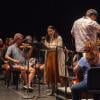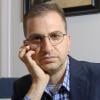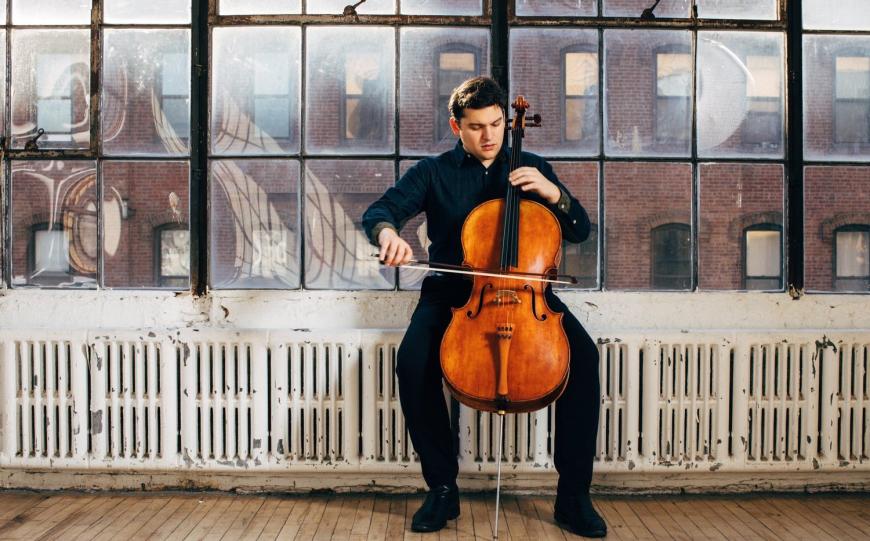
A career in music was “inevitable” for 31-year-old cellist Gabriel Cabezas.
He started on the cello at the tender age of 4, dutifully learning all the Suzuki Method staples, like “Go Tell Aunt Rhody” and “Lightly Row.” Lessons with Hans Jørgen Jensen, professor of cello at the Bienen School of Music at Northwestern University, and early successes in youth competitions propelled Cabezas’s musical career, as did his involvement with the Sphinx Organization, the Detroit-based nonprofit focused on advancing the careers of young Black and Latino classical musicians. He went on to study at the Curtis Institute of Music under the tutelage of New York Philharmonic principal cellist Carter Brey.
As he grew older, Cabezas realized he didn’t want to confine himself to being only a classical cellist.
“I want to have a curious and omnivorous spirit about music in general,” he said in an interview with SF Classical Voice. “There’s just so many things you can do as a musician.” So after graduating, Cabezas began a multidimensional career as a soloist, chamber musician, and studio artist — including appearances on albums by popular artists such as Taylor Swift and Phoebe Bridgers.
Throughout Cabezas’s career, one unwavering priority has been promoting new music by living composers. “I love the act of creation … the potential of bringing things to life,” he said.
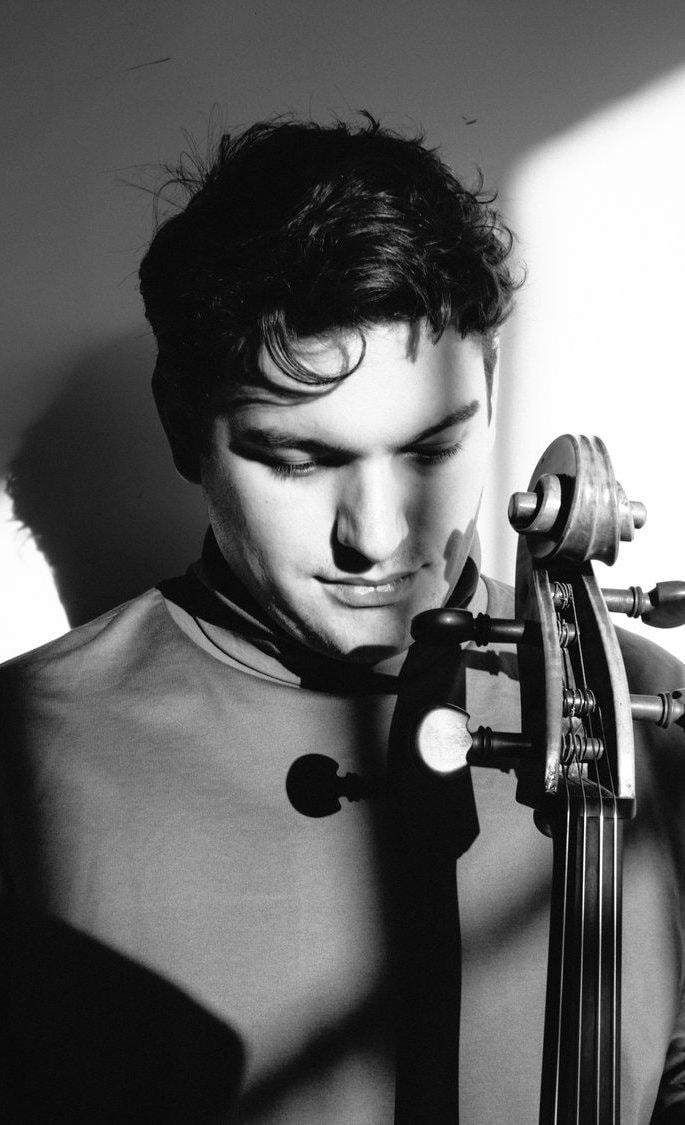
Cabezas, who currently resides in Washington, D.C., caught up with SFCV over the phone ahead of his debut at the Cabrillo Festival of Contemporary Music in Santa Cruz on Aug. 10, for which he’ll play Bay Area native Gabriella Smith’s climate change-inspired cello concerto Lost Coast, with Cristian Măcelaru conducting the Cabrillo Festival Orchestra. (Cabezas premiered the concerto with the Los Angeles Philharmonic and Gustavo Dudamel in May 2023.) This interview has been edited for length and clarity.
How did you get your start on the cello?
I was 4 or 5, living in the Dallas-Fort Worth area, and we started with the Suzuki School. They just gave me the cello, and I ran with it and never really looked back. As far as I remember, it was chosen for me.
Was there one specific moment you recall when you started taking cello more seriously?
It was kind of a slow burn. You start off, and you’re trying to keep practicing every day. Definitely, once we moved back to Chicago [at age 9] and I started doing more local competitions, then I ended up becoming more serious about it. My family, teachers, and other people I was around all made sure that I was practicing, so I just put myself in a position where, as I got older, it was like, “Well, you actually are pretty serious about this, and you’re doing pretty well — maybe you should go to school for it.”
What role did winning the Sphinx Competition twice — the junior division in 2006 and then the senior division in 2012 — play in shaping your career?
I remember hearing about Sphinx early on. There was somebody in Hans [Jørgen Jensen’s] studio who had gone to the competition. I ended up applying for the junior division in 2006, and I won, so that gave me more of a cue that being a professional musician was possible.
That was very early on for me: I was 13. But you get into a situation where people are actively wanting you to perform and share music with them, and that was a real confidence [boost]. Working with Sphinx and having all the performance opportunities that came up after winning the junior division was a big lift for me. It was amazing to also meet all the musicians there, many of [whom] are still my friends nearly 20 years later.
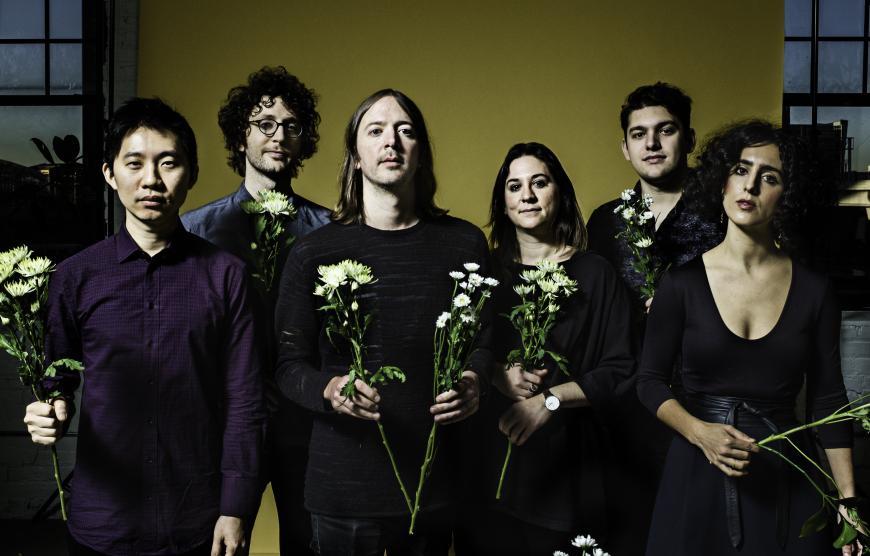
And I ended up doing the senior division when I was at Curtis [and] won that. Then, a few years later, I was lucky enough to receive the Sphinx Medal of Excellence, which was an amazing thing for somebody young and coming out of school. I also played a lot with the Sphinx Virtuosi, which is their wonderful self-conducted chamber orchestra, and did a bit of work teaching and doing master classes for the Sphinx Performance Academy, which I think is one of the most amazing programs they do. A lot of people who come through those programs become professional musicians.
When you look back at your career so far, what have been some of the defining moments?
I loved being at Curtis. That ended up being a really great environment for me to grow as a musician. I always respond to being surrounded by musicians that I really love and respect. I think I’ve been drawn to chamber music and contemporary music because of that — they’re more collaborative efforts at the end of the day.
I’ve really loved my work with [contemporary chamber ensemble] yMusic. I’ve now played with them for 10 years, and we’ve done some lucky things. We toured with [singer-songwriter] Paul Simon in 2018, and that included his farewell shows at Corona Park in New York and at Hyde Park in London and, for many thousands of people, on Saturday Night Live. We’ve commissioned hours of work together, written our own music, and been able to do concerts at Carnegie Hall, Cal Performances, many amazing venues across the country and internationally. It’s been a really rewarding journey with them.
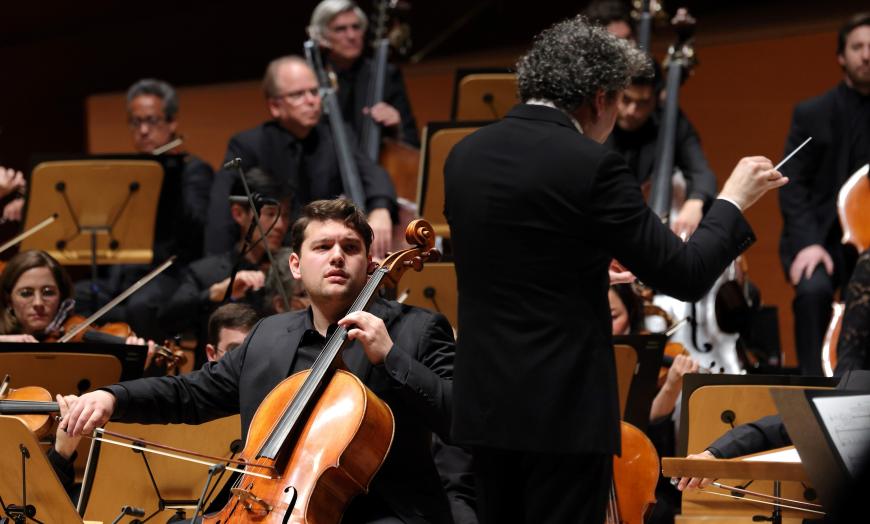
Let’s talk about your upcoming performance of Gabriella Smith’s Lost Coast at the Cabrillo Festival, which focuses on new orchestral music. How did you first meet Gabriella?
I’ve had a great time working with Gabriella, who’s been a good friend since we were at Curtis, in the same class. We were roommates there and later in New York. Being able to take our ideas of doing music together while we were at school and then have this cello concerto premiere at Walt Disney Concert Hall [in Los Angeles] over three nights with Gustavo Dudamel … like, that’s insane.
What’s it like to collaborate with a composer you know very well?
My friendship with Gabriella is one of the things that turbocharged me to play new music. We worked together, maybe not in the first year, but at least from the second year [at Curtis] on. I was able to participate in most of her chamber music premieres while we were in school. We were talking about collaborating on pieces very similar to this one even back then.
When you have a long collaboration with anyone, you end up influencing each other. I think about her music when I approach other works, and it’s definitely stretched me as a performer. There’s a lot of improvisation in this piece. She gives you instructions about what she’s looking for, but there’s a lot of freedom. Working that way has influenced me — when I play more traditional music, I think with a composer’s brain.
Who approached whom first?
I actually don’t really remember, but we had sketches for a piece that had some of this material [that eventually became Lost Coast] in it. Gabriella used those sketches for a smaller, very early version of the piece for the New York Youth Symphony. A few years later, we were talking about the material again, and we were really interested in doing an album together of some sort.
I’ve always loved how Gabriella has mocked up a lot of her music [with] a digital audio workstation and done recordings of herself playing violin and bowls and pans from the kitchen, singing different layers of what will eventually be instrumental parts. I’ve always really enjoyed those textures that she finds. It’s very fun and cool to see how she takes that concerto-y material and writes and creates a whole album out of that.
I see that this piece calls for amplified cello. What effect can audiences expect with that?
That’s a technical consideration, really, because some of the techniques that she has in the piece can only be played so loudly. For example, in the third movement, there’s this long extended pizzicato passage, a duet with some percussion instruments, and that’s just not going to cut [through the ensemble texture] the way it’s supposed to [unamplified].
When she was thinking about the balance of different sections, [she decided] there’s a sense in the music that the cello is always walking in a straight line and the orchestra is the tide — it comes in and out, overwhelming and leaving space. Having the amplified cello gives a little bit more leeway to have some really lush, interesting orchestral passages and not be worried about the challenges that that can pose.
Why do you feel it’s important to highlight new works by living composers?
Music is always alive, so if we don’t make anything new, what are we doing here? Every other art form continues to make new stuff. I love the act of creation. I like the potential of bringing things to life. I like making strong interpretive decisions about how things should go. There’s nothing better than a great collaboration between like-minded musicians. I feel strongly about doing that to play [Claude] Debussy’s String Quartet and also [when it comes to] creating new work by composers.
Cellists have many idols. It’s always important to remember that so many of the “great cellists” made playing new music a priority. Yo-Yo Ma has commissioned and recorded so many new works. Mstislav Rostropovich basically created the entire 20th-century canon that we all play now as if it’s always been there. That perspective on creating new music and programming composers is why [this work] is so important to me.


